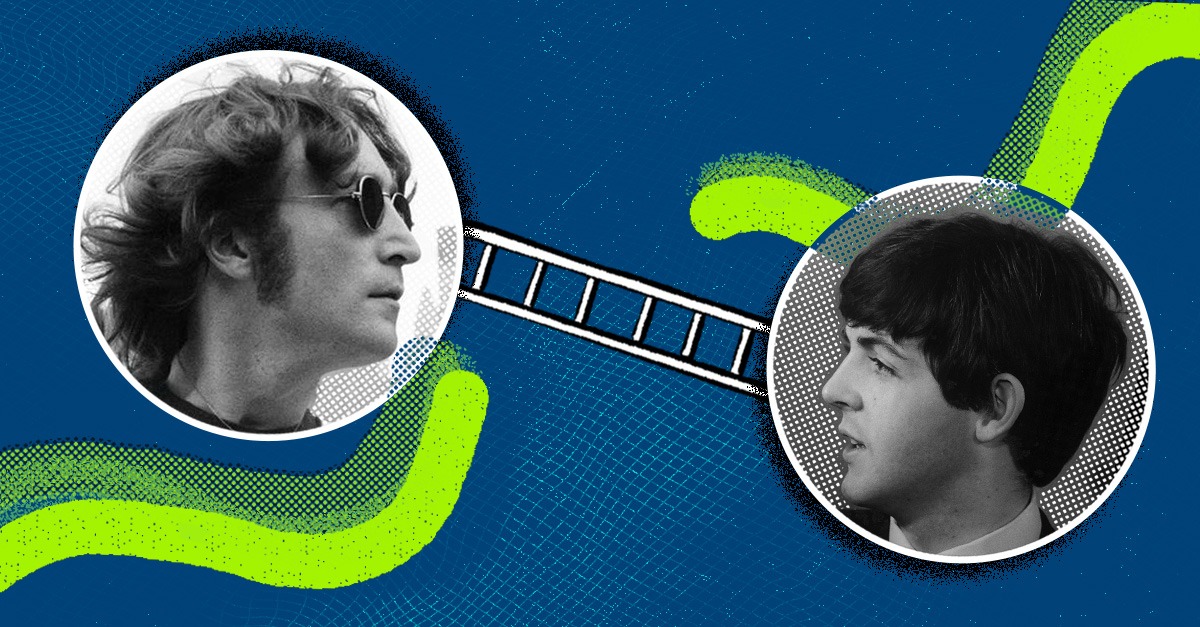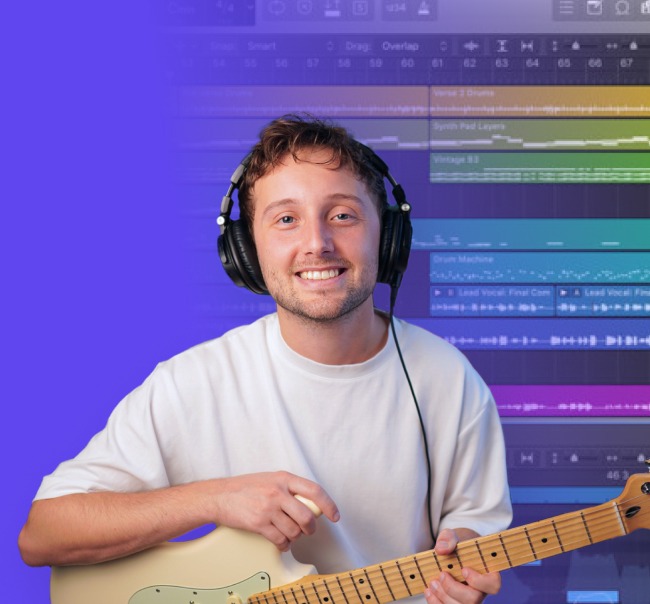Bridge in Music: How to Tie Your Song Together

Following a formula in your songwriting structure can help with creating parameters for your creativity.
But sometimes that formula needs a pattern interrupt to create or release tension and tie everything together.
Simply using a strict intro-verse-chorus-verse-chorus-outro formula can sound repetitive and even jarring at times.
That’s where the bridge comes in handy.
In this guide, we’ll take a look at how to write a song with a bridge in your song structure.
You’ll learn some creative ways to use bridges and how to make a more cohesive track.
What is a bridge in a song?
In music, the bridge is a musical passage that connects a section to another section of a song. Bridges are most often used to connect the second chorus to the third verse (or chorus) and follow a VCVCBV format.

Bridges make the second transition from chorus to verse more interesting and help to reduce repetitive and possibly jarring transitions between verse and chorus.
Often the bridge is used to release tension built up during the chorus, but depending on the track a bridge could be used to build up more tension.
Theory guides, production tips, new free plugins, gear guides and more—delivered weekly
Keep up with the LANDR Blog.
How to write a bridge section
A bridge section can add the essential contrast that keeps your song from feeling too repetitive.
If your song structure needs more variation, a bridge could be the solution.
The bridge is not where a song ends, it is used to create a path to wherever the song ultimately ends up.
The bridge is not where a song ends, it is used to create a path to wherever the song ultimately ends up.
Often bridges use changes in rhythm, dynamics, or instrumentation to build tension towards the chorus, or pre-chorus section.
But, bridges can also strip down the arrangement and lower the dynamics to release tension after an intense chorus.
Bridges are often instrumental or use a countering vocal part or variation on the song’s vocal hook.
Bridges are often instrumental or use a countering vocal part or variation on the song’s vocal hook.
This can be a method of giving the vocalist a break after a difficult passage or merely a way of bringing out contrast with new sounds in the arrangement.
The main question most songwriters grapple with is what to put in a bridge.
While there are no rules as to what exactly a bridge should consist of, the main point of any bridge is to be different from the verse and chorus.
Still, the bridge should connect the ideas in the verse and chorus in some way.
A heavy and pulsing build-up could be just as interesting as a simple breakdown of the arrangement. Bridge sections can even work as a short solo section, instead of having the soloist play over the verse.
That shredding guitar section before the song returns to its original ideas in the third verse can be an important and memorable part of a song.
Music bridge examples
There’s plenty of music bridge examples in popular music, many songwriters use them in their tracks.
Here are a few particularly well-known bridge examples:
1. Good Vibrations – The Beach Boys
Starting around 1:40 until 2:58 in the video below Brian Wilson demonstrates his songwriting prowess by dropping a huge bridge section.
The chorus suddenly shifts into several completely different sections that feature different rhythms, some background vocals, new some instruments (including a jaw harp!).
The bridge continues into a second section with a break down that uses an organ, shaker, melodica, and counter vocals.
This is enough to create plenty of tension before triumphantly returning to the chorus which is followed by an equally strange and leftfield outro.
This song is a great example of a bridge that breaks the rules but still achieves the goal of driving the song to an intense final chorus.
2. Oops!… I Did It Again – Britney Spears
If you want a really clear example of what a bridge sounds and how it can be a really important part of a song, Oops!… I Did It Again is a great example.
After the second chorus, the bridge goes into a funkier section that goes as far as breaking down into a cinematic spoken-word moment.
Then the song changes key one step up, and transitions to the pre-chorus creating plenty of release with its higher key and an epic gospel-style choir.
3. In Da Club – 50 Cent
Yes, bridges are used in hip-hop music too.
At 2:25 In Da Club switches to a slower more punchy flow and uses a climbing orchestral french horn sample.
This creates just enough tension to nicely loop back to the second verse where 50 Cent’s flow returns to its usual intensity.
The Role of the Bridge in the Song’s Narrative
The bridge can serve as a turning point in the narrative arc of your song.
Especially considering how your verses set up the situation or the context and your chorus illuminates the theme or main idea.
Then arrives the bridge, which can provide a different perspective, introduce a twist, or further the story’s emotional depth.
It’s a space where you can introduce new lyrical content that adds a different dimension to your narrative.
For example, in Taylor Swift’s hit “All Too Well,” the bridge lyrics “Maybe we got lost in translation, maybe I asked for too much / But maybe this thing was a masterpiece ’til you tore it all up” provide a potent emotional shift and a new perspective that further the song’s narrative of a painful breakup.
Using a bridge for narrative progression doesn’t just apply to lyrical songs either.
In instrumental compositions, the bridge can offer a shift in mood or tone that provides a fresh angle to the story your music is telling.
For instance, a sudden change in key or tempo can signify a shift in narrative direction, even without words to guide the way.
Therefore, when crafting your bridge, consider its potential for narrative development.
Ask yourself, what more does your listener need to know? What additional layers of emotion can you tap into? Is there a sudden realization or a perspective shift you want to communicate?
Your bridge could be the ideal place for these narrative elements.
Beyond the bridge
The bridge is a very common tool in songwriting, but that doesn’t mean every song requires a bridge.
You have the creative license to use one or not.
You have the creative license to use a bridge or not.
Just like Brian Wilson did, you can throw all the rules out of the window and turn your bridge into something completely crazy, unique and different.
Strip the entire song down to the bare vocals with an acapella section.
Change into an odd time signature or switch up the rhythm completely.
Dissolve the song into a noisy ambient breakdown.
Bit crush the instrumentation and replace your drums with vintage TR-909 samples to give your track a video game soundtrack style sound.
How the bridge (or any part of your song) works is up to you because you are free to do whatever you want!
Gear guides, tips, tutorials, inspiration and more—delivered weekly.
Keep up with the LANDR Blog.
Latest posts


